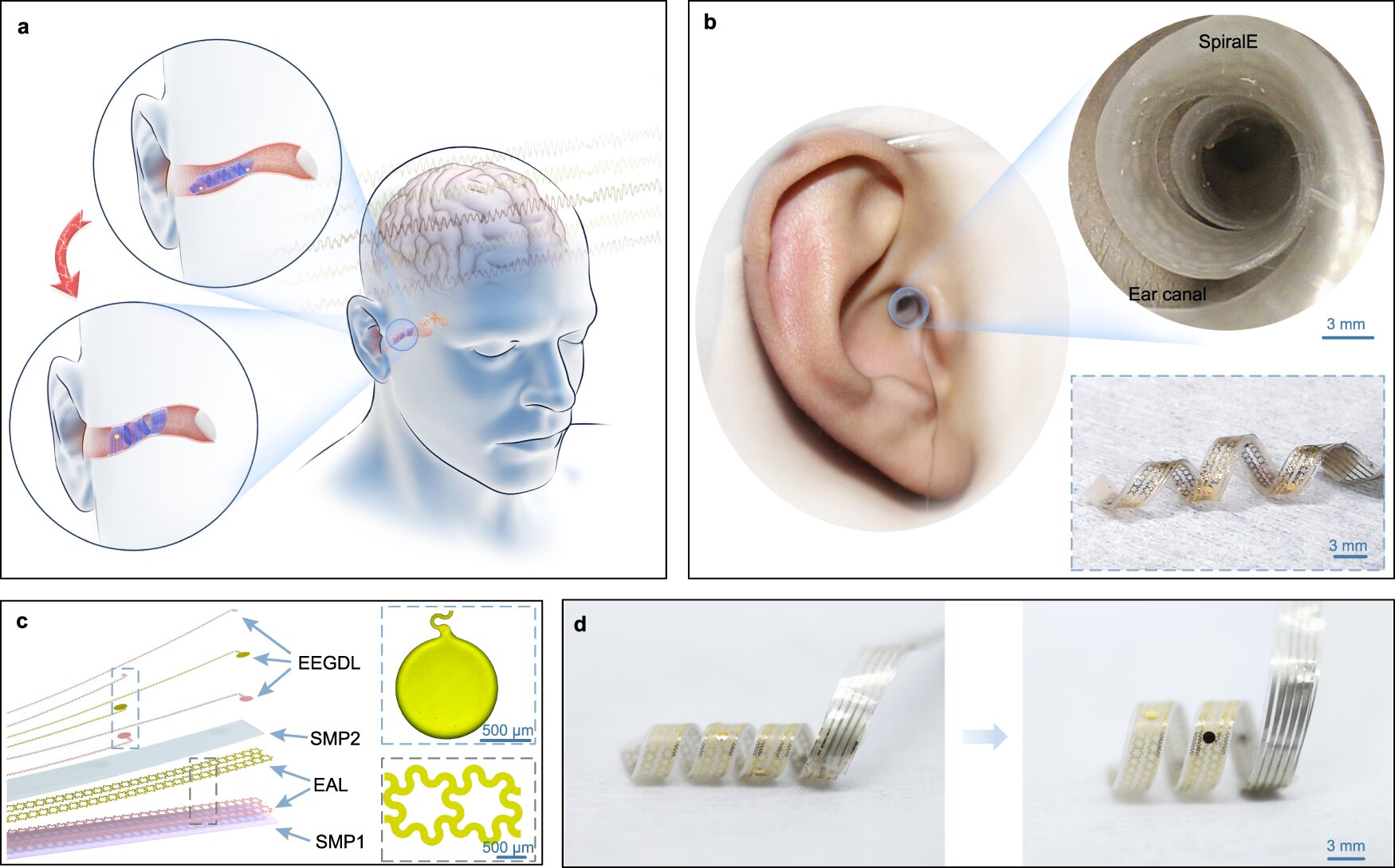Brain-computer interfaces (BCIs) have been in development since the mid-1990s, with the goal of revolutionizing communication between the human brain and computers. A new spiral BCI developed by a team of Chinese engineers has the potential to be a landmark achievement in this field.
Engineers in China have developed a non-invasive brain-computer interface (BCI) that can be inserted into the ear canal without zero hearing loss. The new device, SpiralE, is made of polydimethylsiloxane (PDMS), a soft and flexible material that is biocompatible and non-toxic. PDMS is a trusted choice in medical devices because of its exceptional properties.
A brain-computer interface (BCI) is a system that allows a computer to measure and interpret brain activity and convert it into commands that can be used to control devices or applications. BCIs are used in various applications, including assistive technology, medical research, and gaming.
The ingenious spiral design of SpiralE allows sound waves to travel through effortlessly rather than being blocked by it. Seamlessly connected to a computer through a wired interface, SpiralE expertly transmits recorded brain waves in real time for quick and efficient data transmission.
BCIs are often associated with invasiveness, which can be risky, expensive, and even uncomfortable for users. The new BCI is more accessible, less invasive, and easier to use than traditional BCIs.
With current animal studies underway, the research team is eager to embark on human trials in the near future. Additionally, they are diligently working on a wireless version of the interface, poised to redefine the human-machine interaction paradigm with unparalleled freedom and ease of use.
The potential applications of SpiralE are vast and impactful, ranging from personalized treatment strategies to enhanced communication solutions for individuals with disabilities, promising to strengthen countless lives.
The device has promising applications in diverse domains, including virtual reality, gaming, and artificial intelligence. With SprialE, the gap between the human mind and coputers is narrowed down. SpiralE opens new vistas for human-machine interactions and propels the domain of BCIs to unprecedented frontiers.
The ingenious spiral design of SpiralE allows sound waves to travel through effortlessly rather than being blocked by it. Seamlessly connected to a computer through a wired interface, SpiralE expertly transmits recorded brain waves in real time for quick and efficient data transmission.
BCIs are often associated with invasiveness, which can be risky, expensive, and even uncomfortable for users. The new BCI is more accessible, less invasive, and easier to use than traditional BCIs.
With current animal studies underway, the research team is eager to embark on human trials in the near future. Additionally, they are diligently working on a wireless version of the interface, poised to redefine the human-machine interaction paradigm with unparalleled freedom and ease of use.
The potential applications of SpiralE are vast and impactful, ranging from personalized treatment strategies to enhanced communication solutions for individuals with disabilities, promising to strengthen countless lives.
The device has promising applications in diverse domains, including virtual reality, gaming, and artificial intelligence. With SprialE, the gap between the human mind and computers is narrowed down. SpiralE opens new vistas for human-machine interactions and propels the domain of BCIs to unprecedented frontiers.







